Heartfelt Mandala: A Journey of Connection, Release and Co-Creation
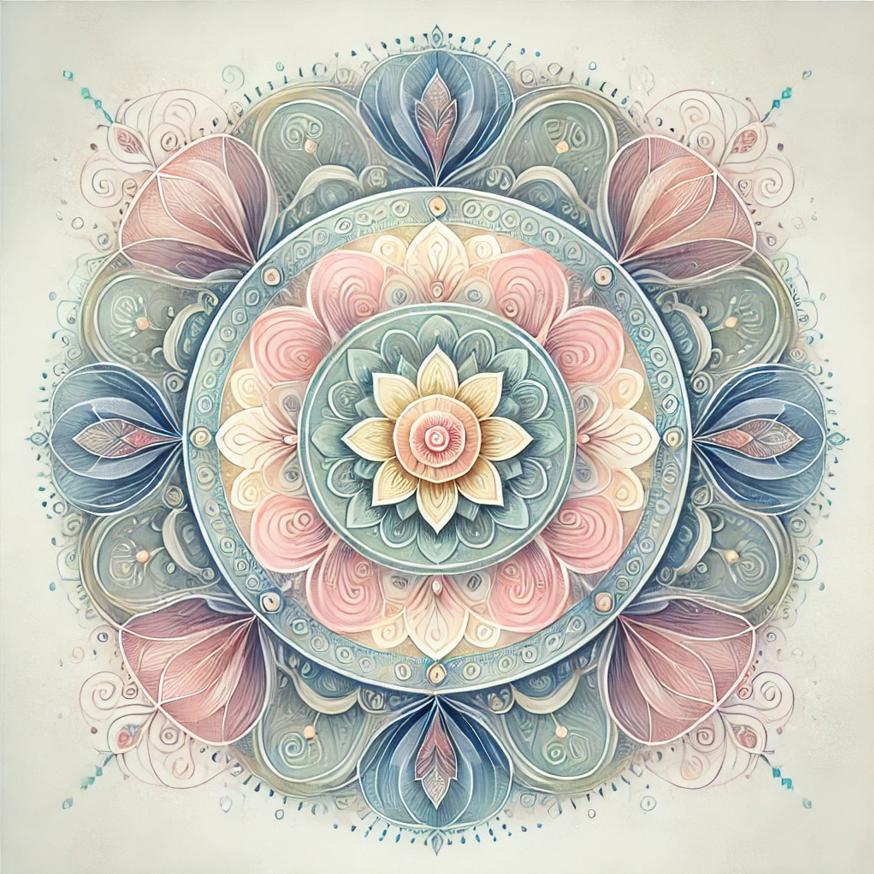
Summary
This is an accessible, modular toolkit for individuals or pairs to engage in the creation of mandala paintings, integrating elements of art therapy and psychotherapy. The core of this course is to promote emotional connection, self-expression, and stress relief through collaborative or individual creation. Simultaneously, it provides multimedia support, such as texts, images, video examples, and audio files to ensure that learners of different backgrounds and ability levels can easily understand the test. After completing the course, there are self-assessment questions and a sharing platform provided.
Introduction
What Is a Mandala? 🤔
A mandala is a spiritual and ritualistic symbol in Hinduism and Buddhism that represents the universe. The word ‘mandala’ is derived from the Sanskrit word whose meaning is ‘circle’. The mandala technique, a creative, active learning strategy, helps students develop interpersonal competence, self-awareness, and self-reflection (Ruta and Karja 2023).
Mandala in Hinduism
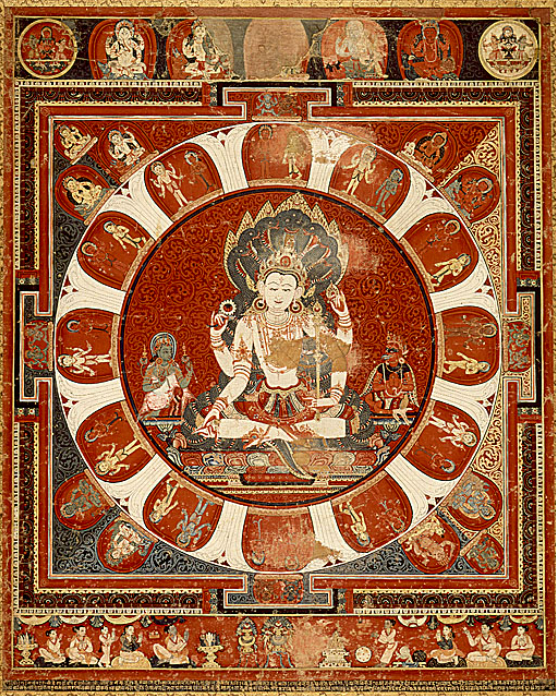
Mandala of Vishnu, Painting; Pata/Paubha, Mineral pigments on cotton cloth, 28 3/8 x 23 3/8 in. (72.07 x 59.37 cm) Made in: Nepal From the Nasli and Alice Heeramaneck Collection, Museum Associates Purchase (M.77.19.5)
PD-US-unpublished
Mandala in Buddhism
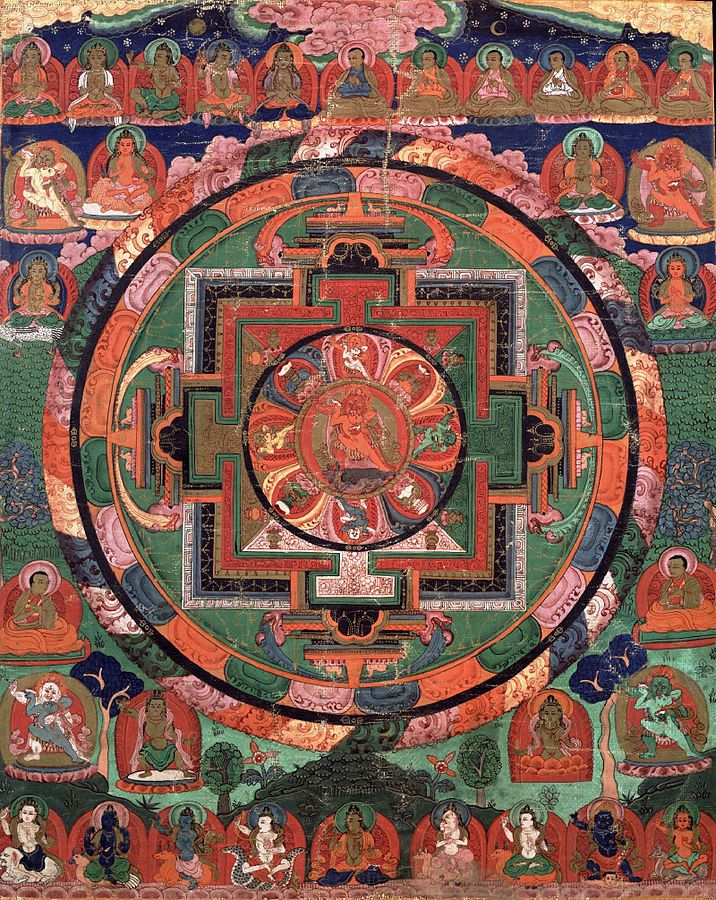
Painted 17th century Tibetan ‘Five Deity Mandala’, in the center is Rakta Yamari (the Red Enemy of Death) embracing his consort Vajra Vetali, in the corners are the Red, Green White and Yellow Yamari, Rubin Museum of Art
PD-US-unpublished
Mandala Painting🎨
Mandala painting popularized by Carl Jung in Western psychology, is increasingly used as a teaching tool in various educational settings. According to Babouchkina and Robbins’ study (2015), adults who drew and colored a blank circle (mandala) freely showed greater emotional improvement than the square groups. These researches indicate that the circular structure of the mandala functions as an ‘active ingredient’ in enhancing mood.
Based on Singh, Surekha and Jaishree’s experiment (2023), mandala coloring and drawing have been found to be beneficial for children at risk for attention deficit hyperactivity disorder (ADHD) meanwhile, it can easily be done at home.
-
Structured mandalas are mandala drawings where color is applied within a given template.
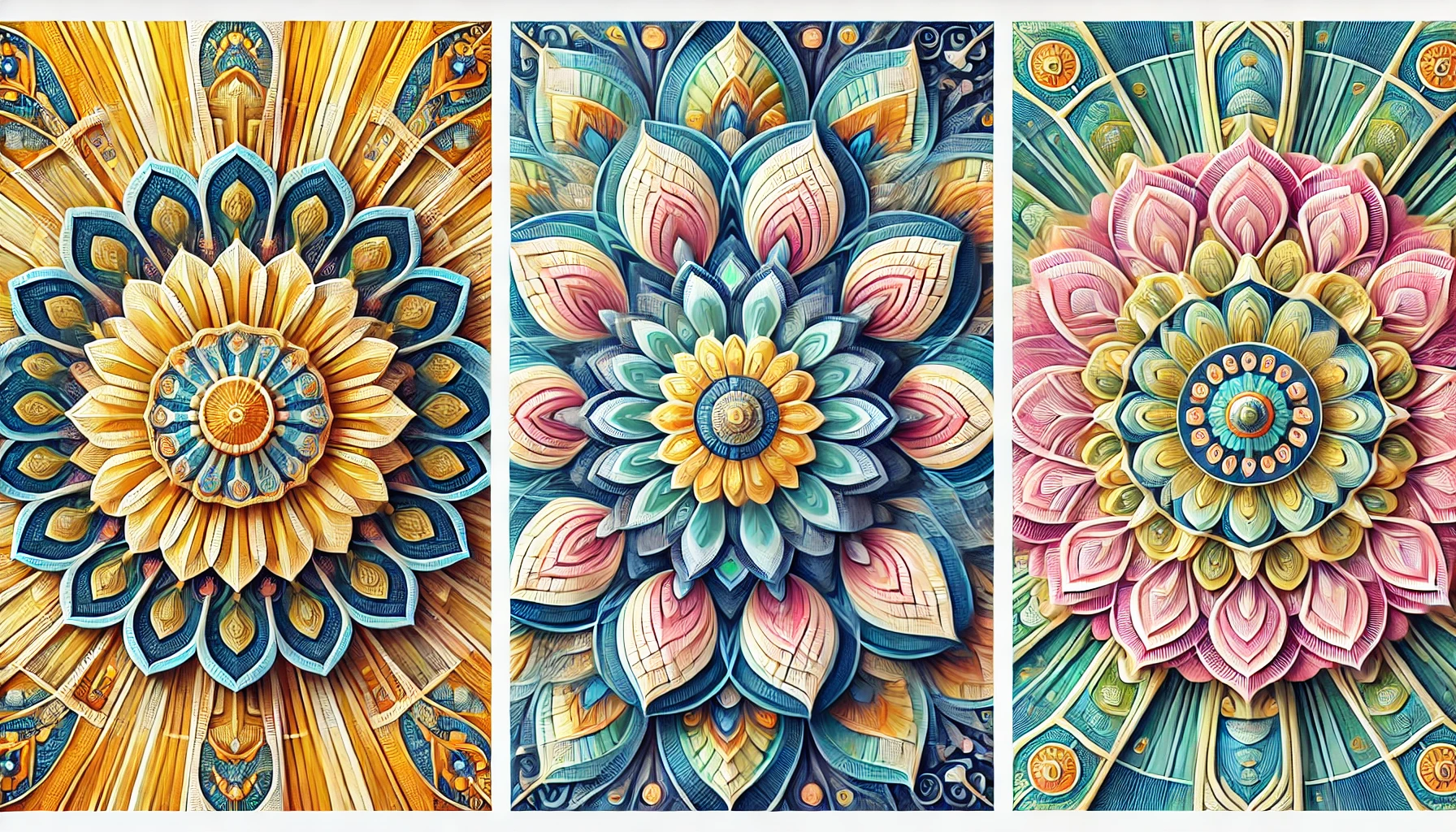
Structured Mandala Examples Created by Di Zou Using ChatGPT
-
Non-structured mandalas requires you to draw it according to your own preferences or any random patterns that come to mind.
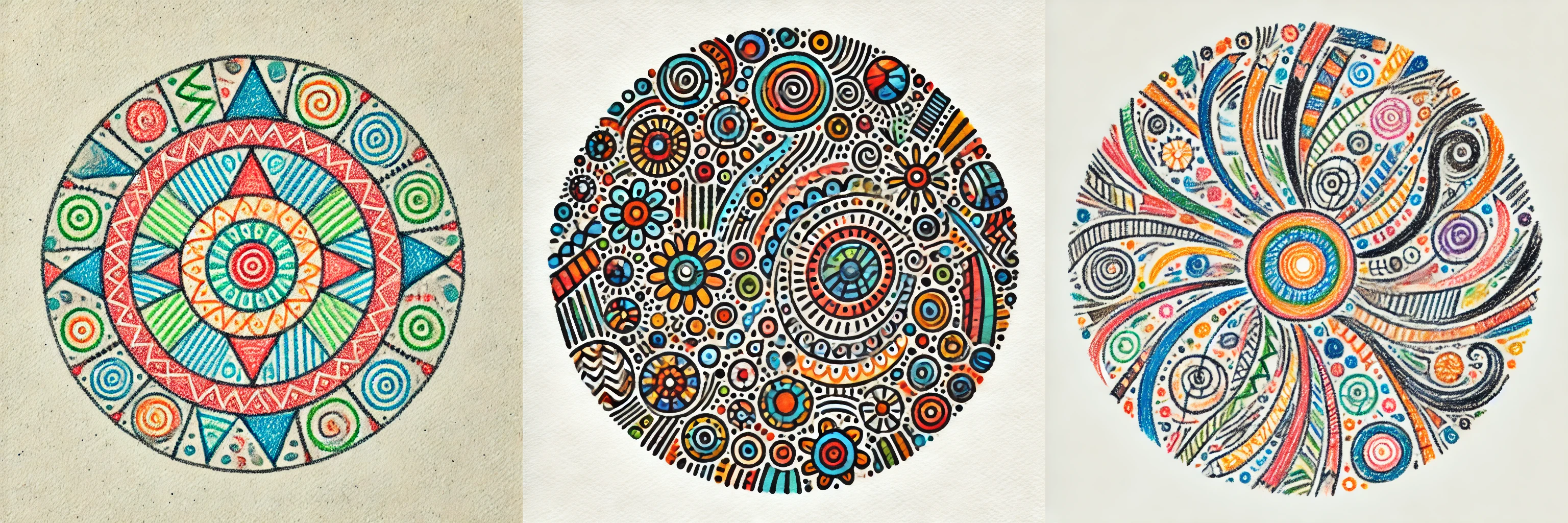
Non-structured Mandalas Examples Created by Di Zou Using ChatGPT
-
Digital mandalas do not need physical pens and paper. You can be painted on a tablet or computer.
Kim, Hyungsook, and Yoonyoung Choi (2023) proposed that mandalas could be digitally transformed to address the national mental health challenges.
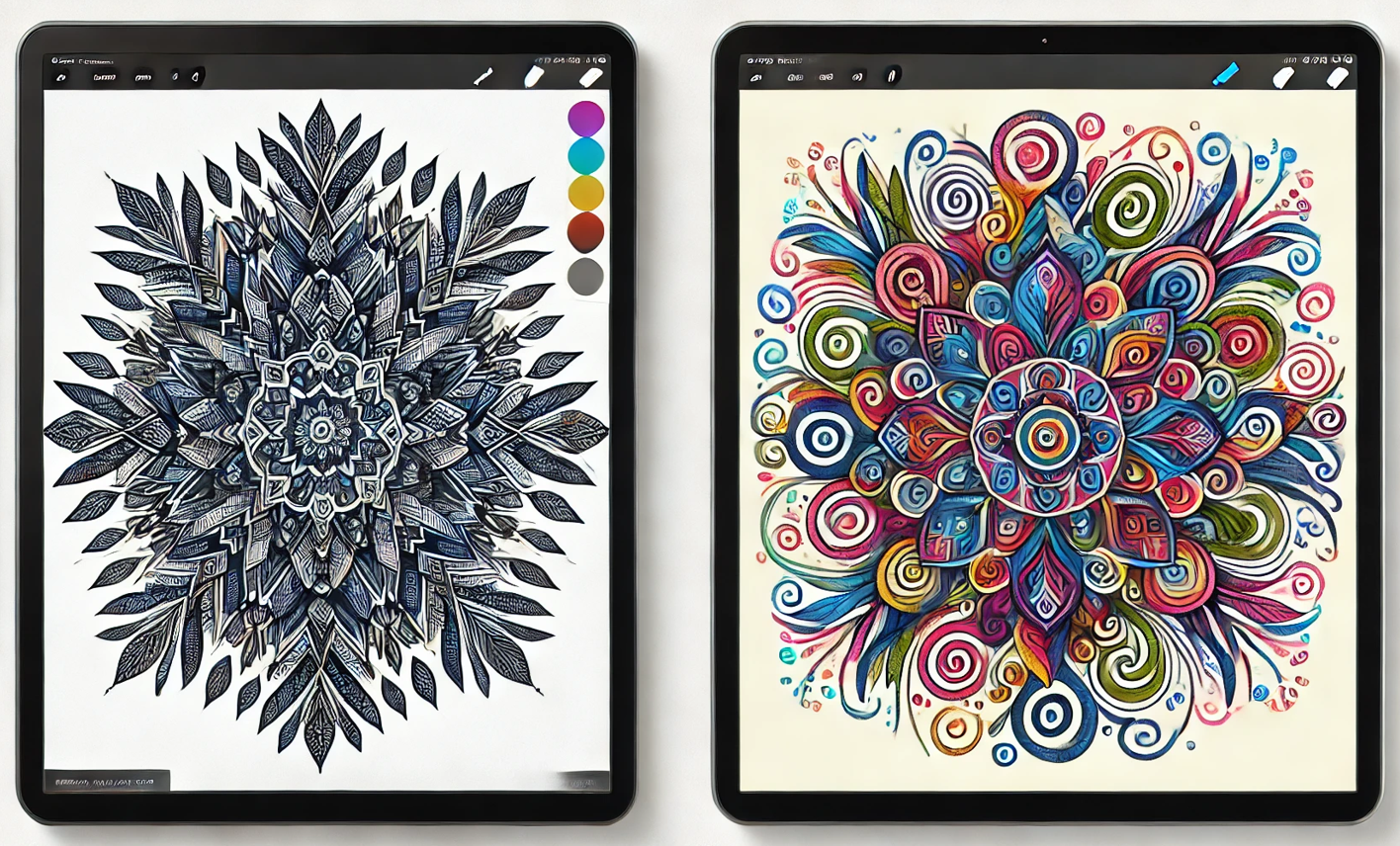
Digital Mandalas Examples Created by Di Zou Using ChatGPT
In this course, we mainly study non-structured mandalas
But you can try any form you like🤩
🙇 How to Create Two-Person Mandala Painting 🧐
Materials Preparation 🧰
Tools and Materials ✍️
-
A Piece of Paper 📝 (Any color is fine )
-
Crayons 🖍️ (Also can be marker pens, watercolor pencils and so on)
-
Environment ☀️🍃: A relaxing environment for the creation (optional)
-
Music 🎵: A soothing, relaxing piece of pure music (optional)
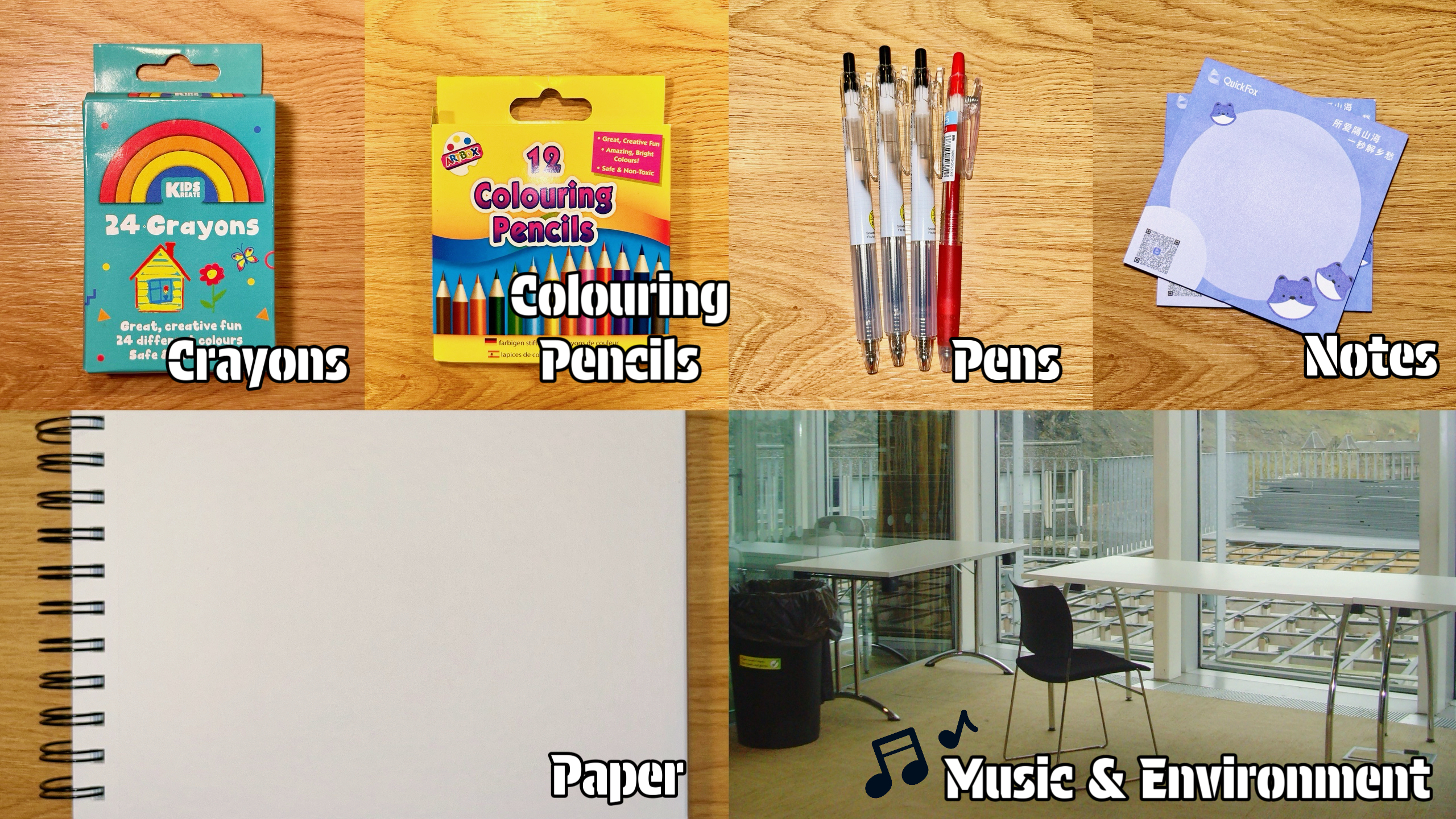
Tools and Materials Created by Di Zou
You can find some meditation music here: https://www.epidemicsound.com/track/gPW1BoLwbV/
🌟🧑🎨Let’s Start to Paint 🎨🌟
🖌️ With Your Partner
👇 👇 👇
👭The Steps for Two-Person Collaboration 👬
STEP 1: Choose an environment where you can relax (recommended but not mandatory) ☕️ 🦮 🏞️

Examples of the Environment Created by Di Zou
STEP 2: Play some light music or meditation music and you can wear headphones if you are inconvenient (optional) 🎶 🎹
meditation music v1 by kris klavenes.mp3 CC BY 4.0
Meditation Music v2 by Kris Klavenes.mp3 CC BY 4.0
Relaxation Music by ZHRØ.mp3 CC BY 4.0
STEP 3: Draw a circle in the center of the paper as a boundary or cut out a circular piece of paper.✍️ ⭕️
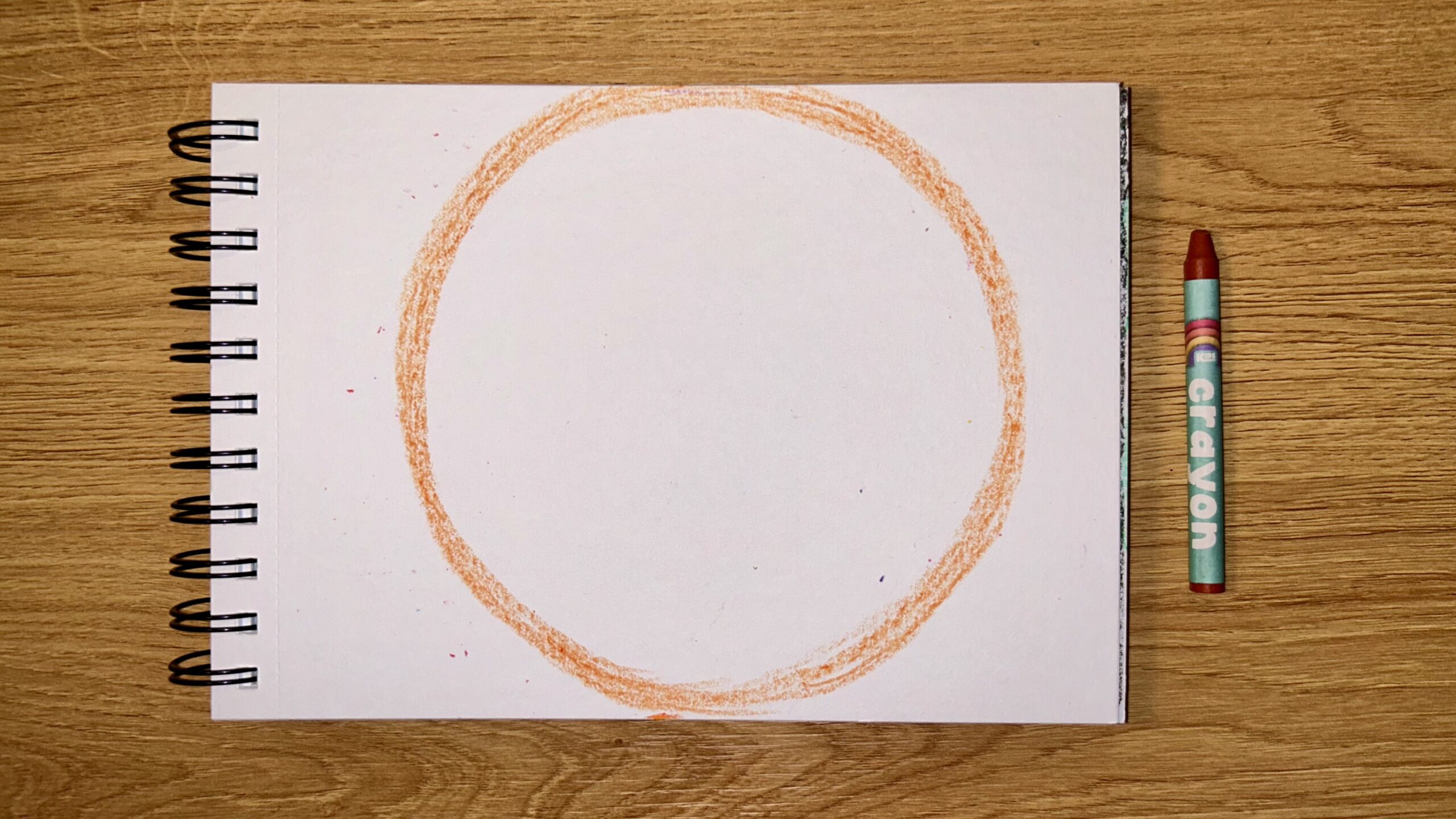
A circle in the middle of the paper (created by Di Zou).
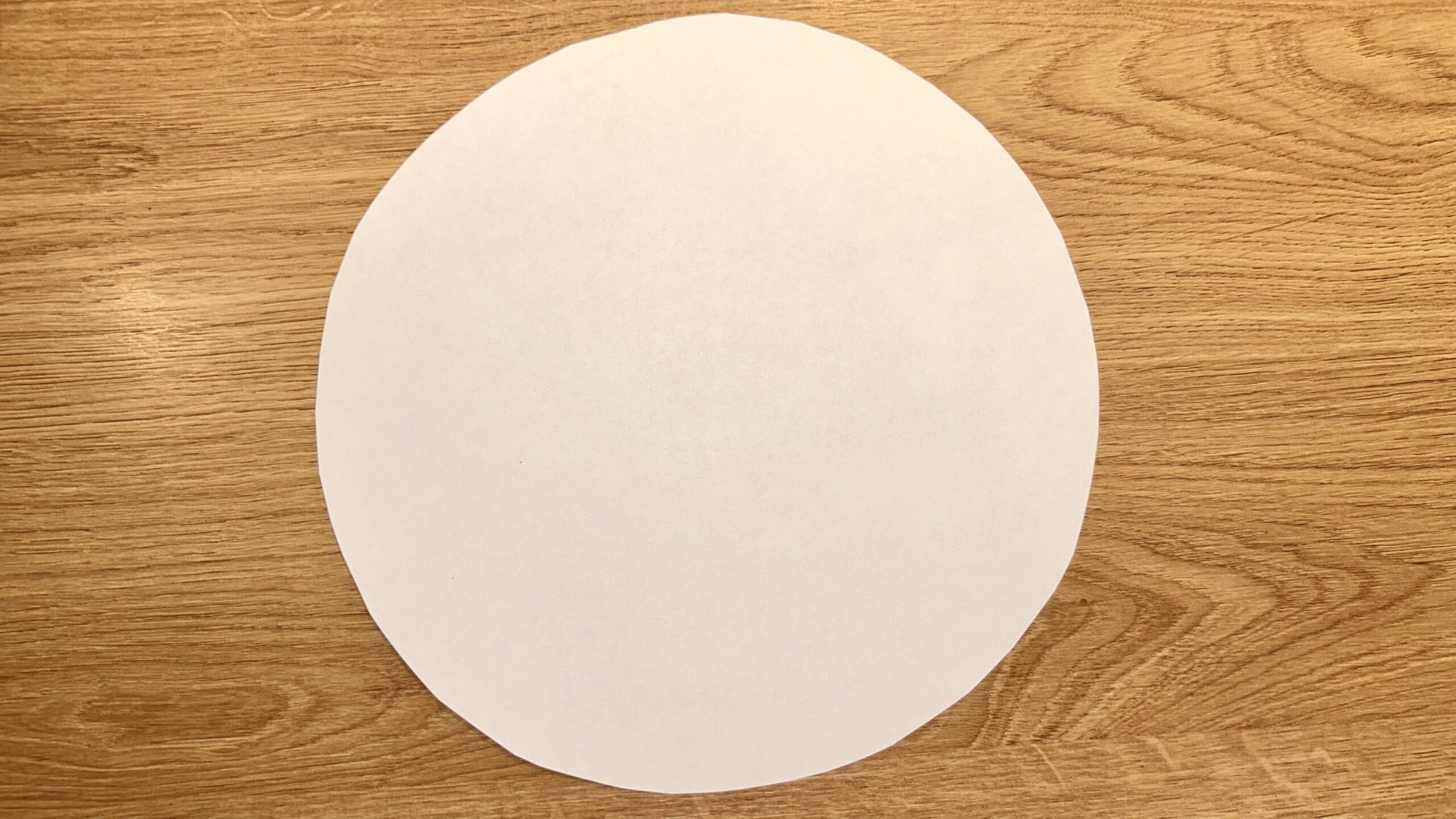
A circular piece of paper created by Di Zou
STEP 4: Two people take turns (three to five times) drawing the inner shapes (it can be any shape, color, or pattern as you like) 🟢 🔶 🟪
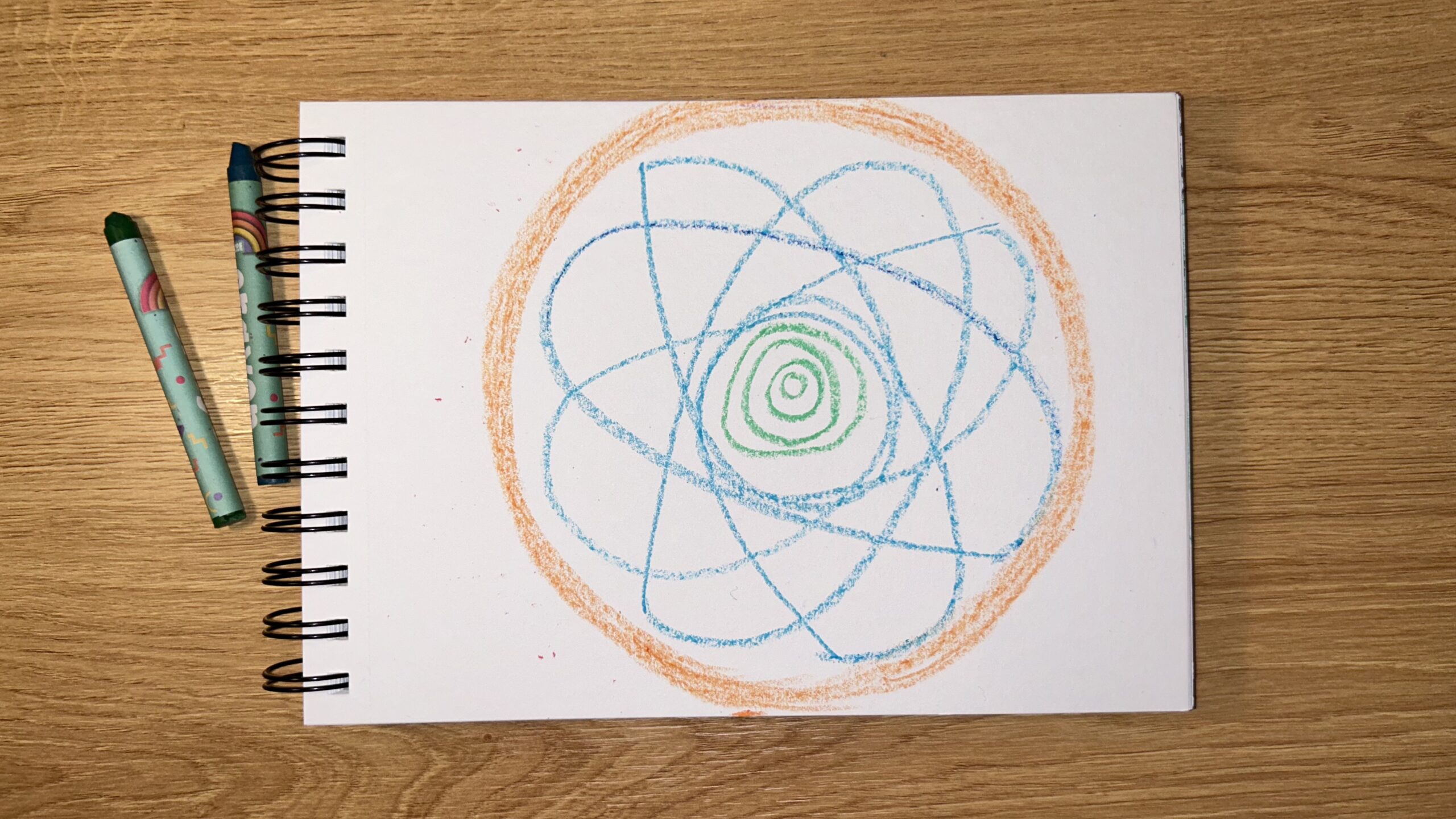
You can paint anywhere inside the circle and use any color or shape you want (created by Di Zou).
You can obtain inspiration from these patterns 😃
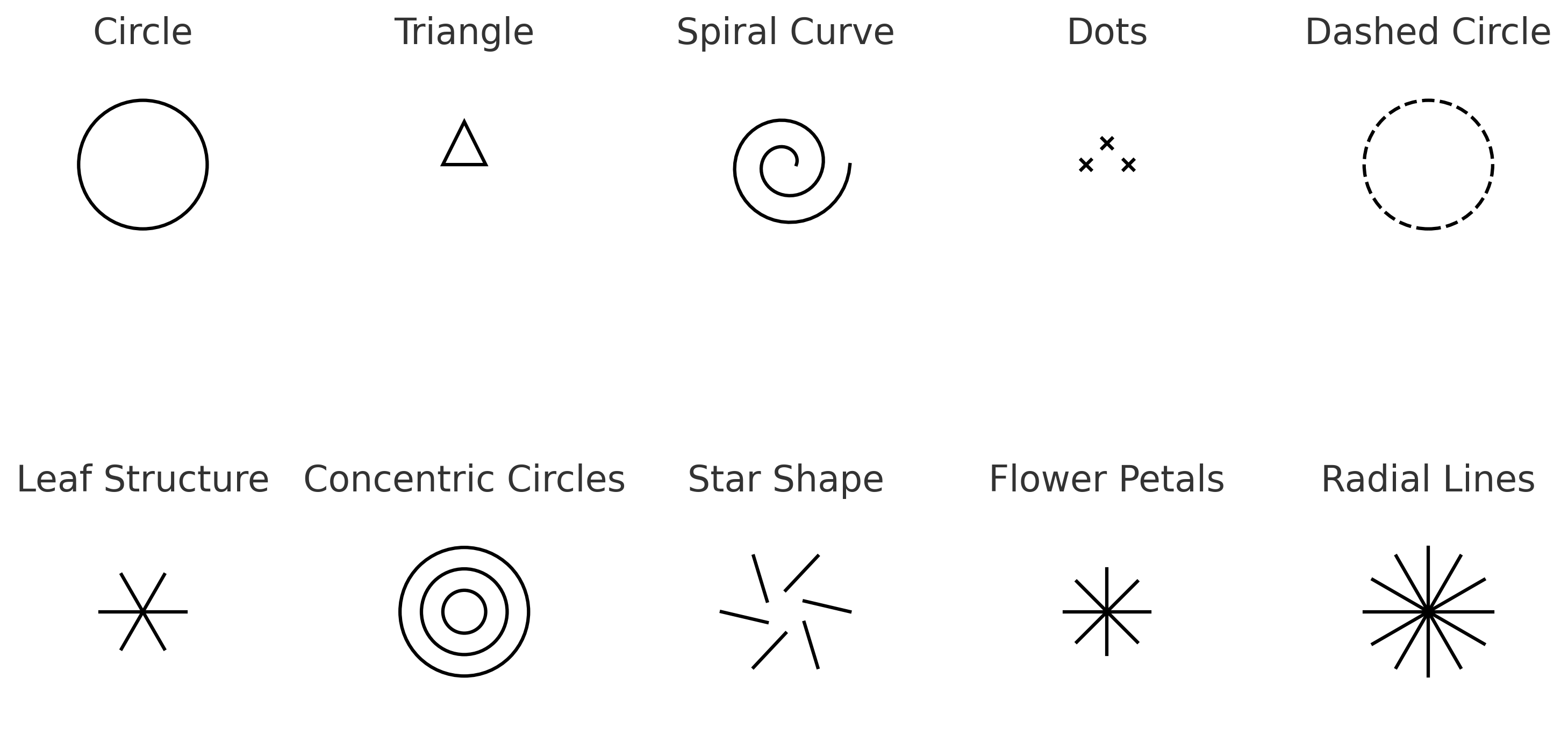
Patterns Created by Di Zou
You can think about these guiding questions while you draw 😆
What’s the weather like today? ☁️☀️
How are you feeling? 😃
What did you eat? 🍚
What did you see? What is its shape? 🔻🔺
Can you feel the breath of your body? 🌬️
Can you feel the sounds and lights around you? 🔊 💡
What color are they? Draw them in shape… 🌈
STEP 5: Record the keywords that describe your current feelings (such as happy 😄, sad😔, scared😱) or anything that comes to your mind (such as trees🌲, sunshine🌞 and seas🌊)
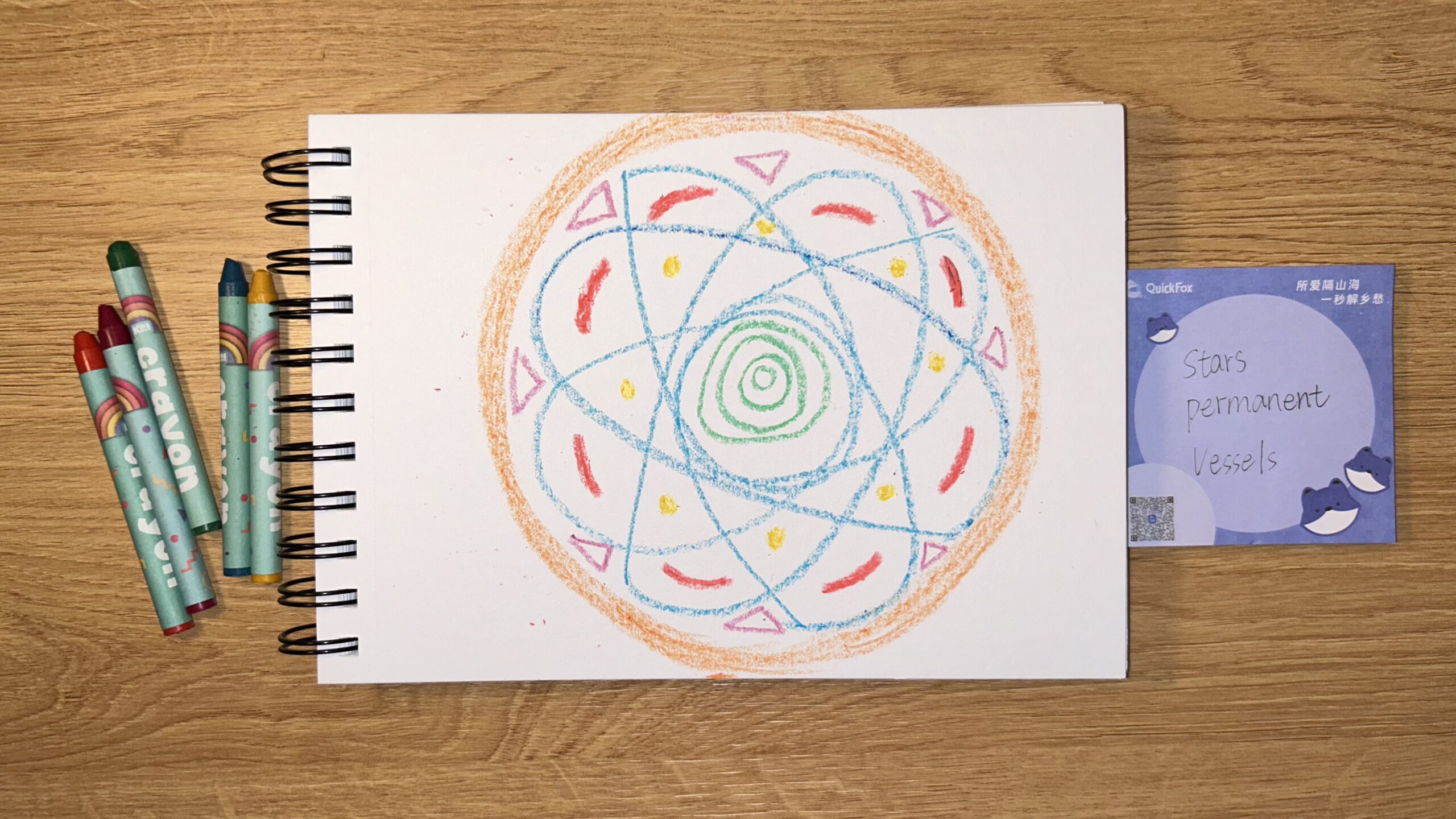
Write down your immediate feelings and the objects that come to mind on a notepad (created by Di Zou).
STEP 6: Give the other person specific instructions (three to five times) on materials, colors, shapes, etc., and then have them create based on those instructions. After several rounds, the painting is completed 🎨 👩🎨
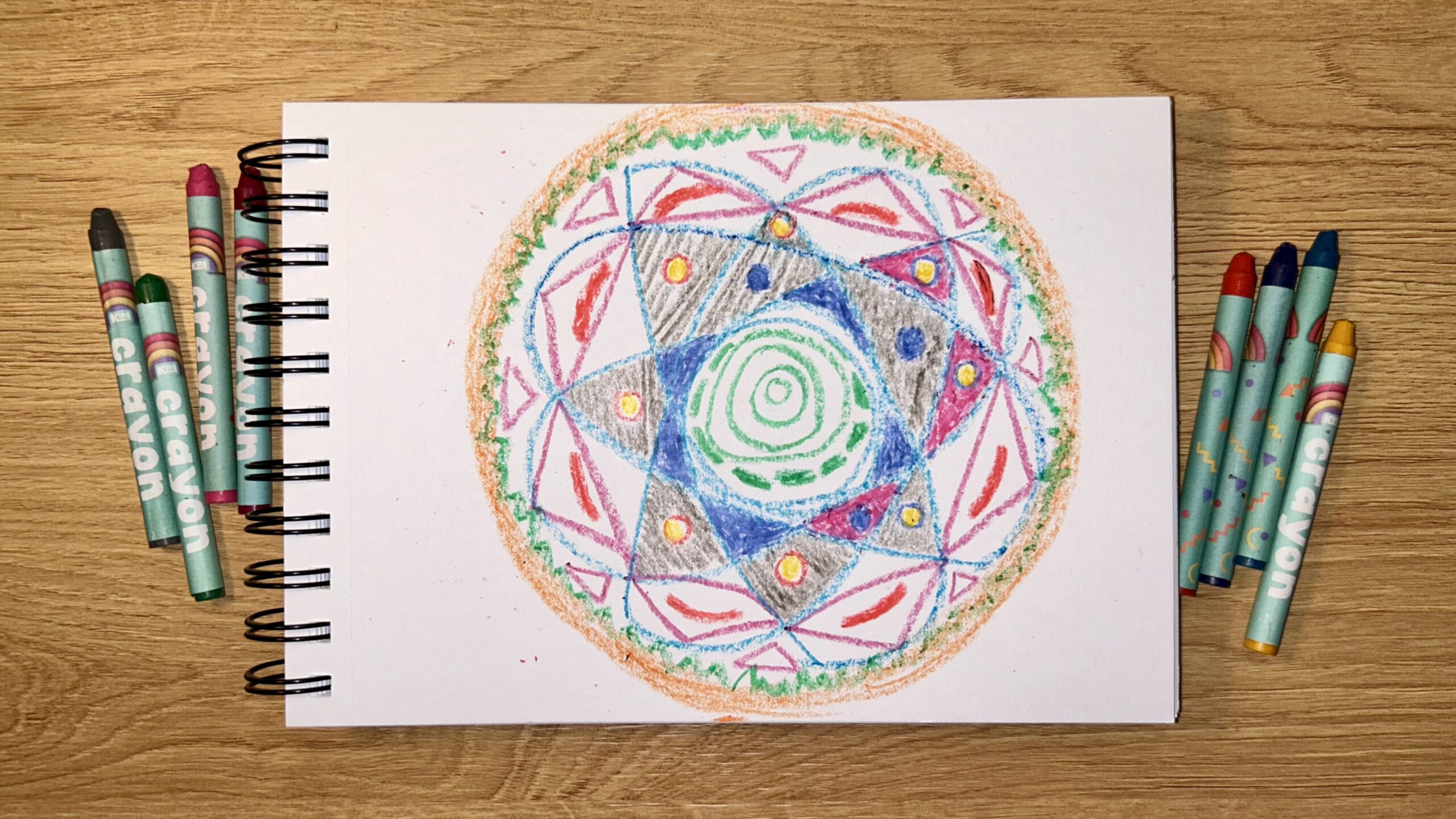
Specify colors, shapes, etc. for the other person to draw (created by Di Zou).
😺 You Can Also Choose to Watch This Video Case
to Learn Two-Person Mandala Painting 🎥 😍
Created by Di Zou
Don’t worry if you haven’t found your partner yet
Come and try it yourself!📹 📀 🥳
Created by Di Zou
STEP 7 (Optional): Use AI to analyze your painting. Question Example: Could you analyze the structure, color, and pattern of this unstructured mandala for me, considering it was jointly created by two people for the purpose of venting emotions and exploring the relationship?
💬 Feedback and Communication 🙋♀️ 🙋🏾
STEP 1: After the painting is completed, you should review your thoughts, emotions and intentions based on the keywords you write during the painting process 💡 📝 ✍️
STEP 2: Share your emotional experiences, past memories, and new insights into your relationship to deepen your understanding of yourself and each other 💭 🗣️
It is helpful to import Gibbs’ Reflective Cycle, which includes description, feelings, evaluation, analysis, conclusion and action plan (Gibbs 1988).
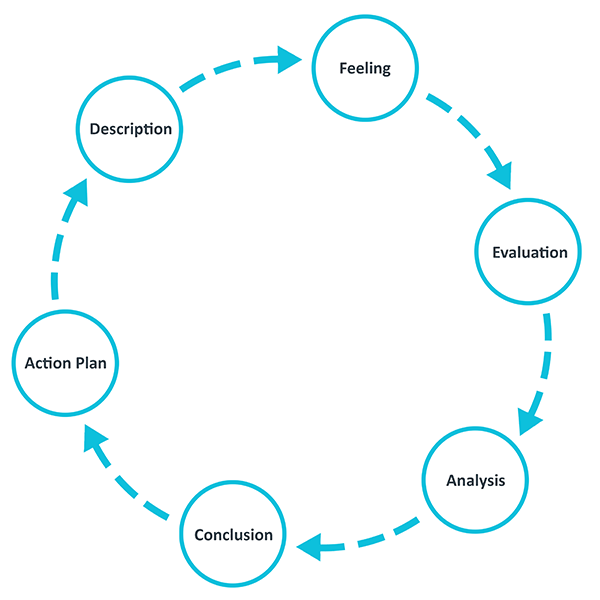
The University of Edinburgh (2024). Gibbs’ Reflective Cycle.
STEP 3: Upload your creation and feedback in Miro!
https://miro.com/app/board/uXjVL907YaU=/?share_link_id=541811293630
Question Self-Test 🙋♂️
“Do I understand the basic structure of mandala painting?”
“Do I feel relaxed during the painting process?”
“Has this painting process aroused some of my emotions?”
“Is the painting process with my collaborator a harmonious one or a conflicting one?”
“What role does the collaborator play during the painting process?”
“Can I sense the emotions of the collaborator?”
“Do we know each other better after finishing this painting?”
🎉🎊Congratulations!🎊🎉
👏You Now Know How to Create a Mandala Painting🥳
Hope you will keep create mandala paintings in the future to release stress and anxiety, and heal yourself
References:
Articles:
I Made Ruta and I Wayan Karja (2023). Balinese Hindu Philosophy in Mandala Painting. International journal of social science and human research, 06(04).
Babouchkina, A. and Robbins, S.J. (2015). Reducing Negative Mood Through Mandala Creation: A Randomized Controlled Trial. Art Therapy, 32(1), pp.34–39.
Singh, R., C Surekha and K Jaishree (2023). Efficacy of Mandala Coloring Intervention on Executive Functioning and Emotional & Motivational Self-Regulation Among Children With Symptoms of Attention Deficit Hyperactivity Disorder. Cureus, 15(10).
Kim, H. and Choi, Y. (2023). A practical development protocol for evidence-based digital integrative arts therapy content in public mental health services: digital transformation of mandala art therapy. Frontiers in Public Health, 11, p.1175093.
Gibbs, G. (1988). Learning by doing: A guide to teaching and learning methods. Further Education Unit.
Images:
Jayateja (1420). Mandala of Vishnu. Wikimedia Commons. Available at: https://upload.wikimedia.org/wikipedia/commons/b/bb/Vishnu_Mandala.jpg [Accessed 30 Nov. 2024].
Tibetan ‘Five Deity Mandala’. (17th century). Wikimedia Commons. Available at: https://upload.wikimedia.org/wikipedia/commons/e/e9/Painted 17th century Tibetan Five Deity Mandala.jpg [Accessed: 30 Nov. 2024].
Audio Files:
Kris Klavenes (2022). meditation music v1 by kris klavenes. [MP3] Freesound. Available at: https://freesound.org/people/klavo1985/sounds/658439/ [Accessed 30 Nov. 2024].
Kris Klavenes (2022). meditation music v2 by kris klavenes. [MP3] Freesound. Available at: https://freesound.org/people/klavo1985/sounds/658440/ [Accessed 30 Nov. 2024].
ZHRØ (2020). relaxation music. [MP3] Freesound. Available at: https://freesound.org/people/ZHR%C3%98/sounds/520673/?page=17#comments [Accessed 30 Nov. 2024].
Website:
The University of Edinburgh (2024). Gibbs’ Reflective Cycle. [online] The University of Edinburgh. Available at: https://reflection.ed.ac.uk/reflectors-toolkit/reflecting-on-experience/gibbs-reflective-cycle.
Structured Mandalas Examples © 2024 by Di Zou is licensed under CC BY-SA 4.0
Non-structured Mandalas Examples © 2024 by Di Zou is licensed under CC BY-SA 4.0
Digital Mandalas Examples © 2024 by Di Zou is licensed under CC BY-SA 4.0
Tools and Materials © 2024 by Di Zou is licensed under CC BY-SA 4.0
Examples of the Environment © 2024 by Di Zou is licensed under CC BY-SA 4.0
A circle in the middle of the paper © 2024 by Di Zou is licensed under CC BY-SA 4.0
A circular piece of paper © 2024 by Di Zou is licensed under CC BY-SA 4.0
Paint anywhere inside the circle © 2024 by Di Zou is licensed under CC BY-SA 4.0
Patterns © 2024 by Di Zou is licensed under CC BY-SA 4.0
Write down your immediate feelings and the objects that come to mind on a notepad © 2024 by Di Zou is licensed under CC BY-SA 4.0
Specify colors, shapes, etc. for the other person to draw © 2024 by Di Zou is licensed under CC BY-SA 4.0
Collaborative Mandala Painting Video © 2024 by Di Zou is licensed under CC BY-SA 4.0
Individual Mandala Painting Video © 2024 by Di Zou is licensed under CC BY-SA 4.0
“meditation music v1 by kris klavenes.mp3” by klavo1985 is licensed under CC BY 4.0.
“meditation music v2 by kris klavenes.mp3” by klavo1985 is licensed under CC BY 4.0.
“relaxation music.mp3” by ZHRØ is licensed under CC BY 4.0.
Heartfelt Mandala: A Journey of Connection, Release and Co-Creation © 2024 by Di Zou is licensed under CC BY-SA 4.0
(Painted 17th century Tibetan 'Five Deity Mandala', in the center is Rakta Yamari (the Red Enemy of Death) embracing his consort Vajra Vetali, in the corners are the Red, Green White and Yellow Yamari, Rubin Museum of Art)


